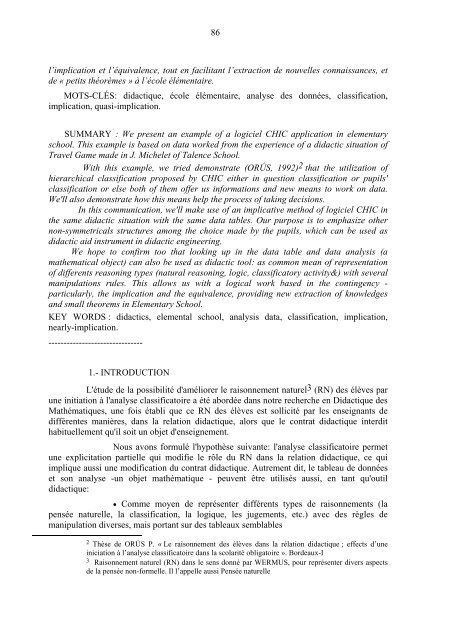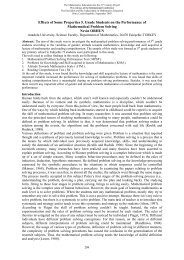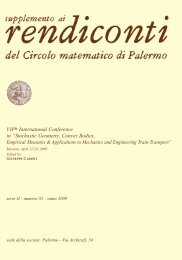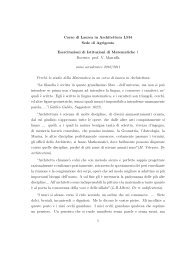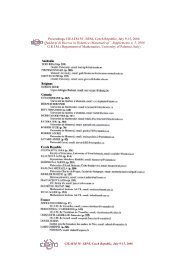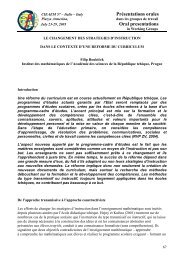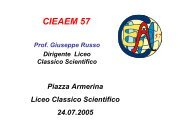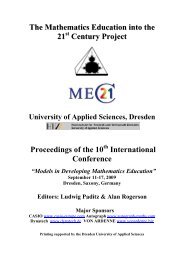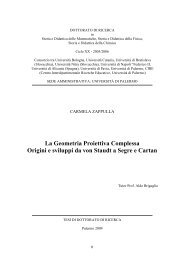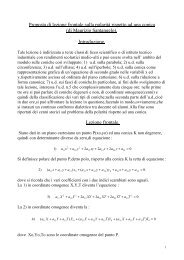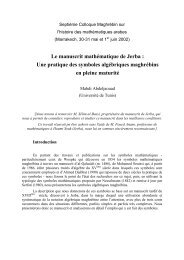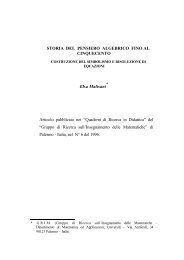Utilisation didactique des tableaux de données et du logiciel « CHIC
Utilisation didactique des tableaux de données et du logiciel « CHIC
Utilisation didactique des tableaux de données et du logiciel « CHIC
You also want an ePaper? Increase the reach of your titles
YUMPU automatically turns print PDFs into web optimized ePapers that Google loves.
86<br />
l’implication <strong>et</strong> l’équivalence, tout en facilitant l’extraction <strong>de</strong> nouvelles connaissances, <strong>et</strong><br />
<strong>de</strong> <strong>«</strong> p<strong>et</strong>its théorèmes » à l’école élémentaire.<br />
MOTS-CLÉS: <strong>didactique</strong>, école élémentaire, analyse <strong><strong>de</strong>s</strong> <strong>données</strong>, classification,<br />
implication, quasi-implication.<br />
SUMMARY : We present an example of a <strong>logiciel</strong> <strong>CHIC</strong> application in elementary<br />
school. This example is based on data worked from the experience of a didactic situation of<br />
Travel Game ma<strong>de</strong> in J. Michel<strong>et</strong> of Talence School.<br />
With this example, we tried <strong>de</strong>monstrate (ORÚS, 1992) 2 that the utilization of<br />
hierarchical classification proposed by <strong>CHIC</strong> either in question classification or pupils'<br />
classification or else both of them offer us informations and new means to work on data.<br />
We'll also <strong>de</strong>monstrate how this means help the process of taking <strong>de</strong>cisions.<br />
In this communication, we'll make use of an implicative m<strong>et</strong>hod of <strong>logiciel</strong> <strong>CHIC</strong> in<br />
the same didactic situation with the same data tables. Our purpose is to emphasize other<br />
non-symm<strong>et</strong>ricals structures among the choice ma<strong>de</strong> by the pupils, which can be used as<br />
didactic aid instrument in didactic engineering.<br />
We hope to confirm too that looking up in the data table and data analysis (a<br />
mathematical object) can also be used as didactic tool: as common mean of representation<br />
of differents reasoning types (natural reasoning, logic, classificatory activity&) with several<br />
manipulations rules. This allows us with a logical work based in the contingency -<br />
particularly, the implication and the equivalence, providing new extraction of knowledges<br />
and small theorems in Elementary School.<br />
KEY WORDS : didactics, elemental school, analysis data, classification, implication,<br />
nearly-implication.<br />
-------------------------------<br />
1.- INTRODUCTION<br />
L'étu<strong>de</strong> <strong>de</strong> la possibilité d'améliorer le raisonnement naturel 3 (RN) <strong><strong>de</strong>s</strong> élèves par<br />
une initiation à l'analyse classificatoire a été abordée dans notre recherche en Didactique <strong><strong>de</strong>s</strong><br />
Mathématiques, une fois établi que ce RN <strong><strong>de</strong>s</strong> élèves est sollicité par les enseignants <strong>de</strong><br />
différentes manières, dans la relation <strong>didactique</strong>, alors que le contrat <strong>didactique</strong> interdit<br />
habituellement qu'il soit un obj<strong>et</strong> d'enseignement.<br />
Nous avons formulé l'hypothèse suivante: l'analyse classificatoire perm<strong>et</strong><br />
une explicitation partielle qui modifie le rôle <strong>du</strong> RN dans la relation <strong>didactique</strong>, ce qui<br />
implique aussi une modification <strong>du</strong> contrat <strong>didactique</strong>. Autrement dit, le tableau <strong>de</strong> <strong>données</strong><br />
<strong>et</strong> son analyse -un obj<strong>et</strong> mathématique - peuvent être utilisés aussi, en tant qu'outil<br />
<strong>didactique</strong>:<br />
• Comme moyen <strong>de</strong> représenter différents types <strong>de</strong> raisonnements (la<br />
pensée naturelle, la classification, la logique, les jugements, <strong>et</strong>c.) avec <strong><strong>de</strong>s</strong> règles <strong>de</strong><br />
manipulation diverses, mais portant sur <strong><strong>de</strong>s</strong> <strong>tableaux</strong> semblables<br />
2 Thèse <strong>de</strong> ORÚS P. <strong>«</strong> Le raisonnement <strong><strong>de</strong>s</strong> élèves dans la rélation <strong>didactique</strong> ; effects d’une<br />
iniciation à l’analyse classificatoire dans la scolarité obligatoire ». Bor<strong>de</strong>aux-I<br />
3 Raisonnement naturel (RN) dans le sens donné par WERMUS, pour représenter divers aspects<br />
<strong>de</strong> la pensée non-formelle. Il l’appelle aussi Pensée naturelle


